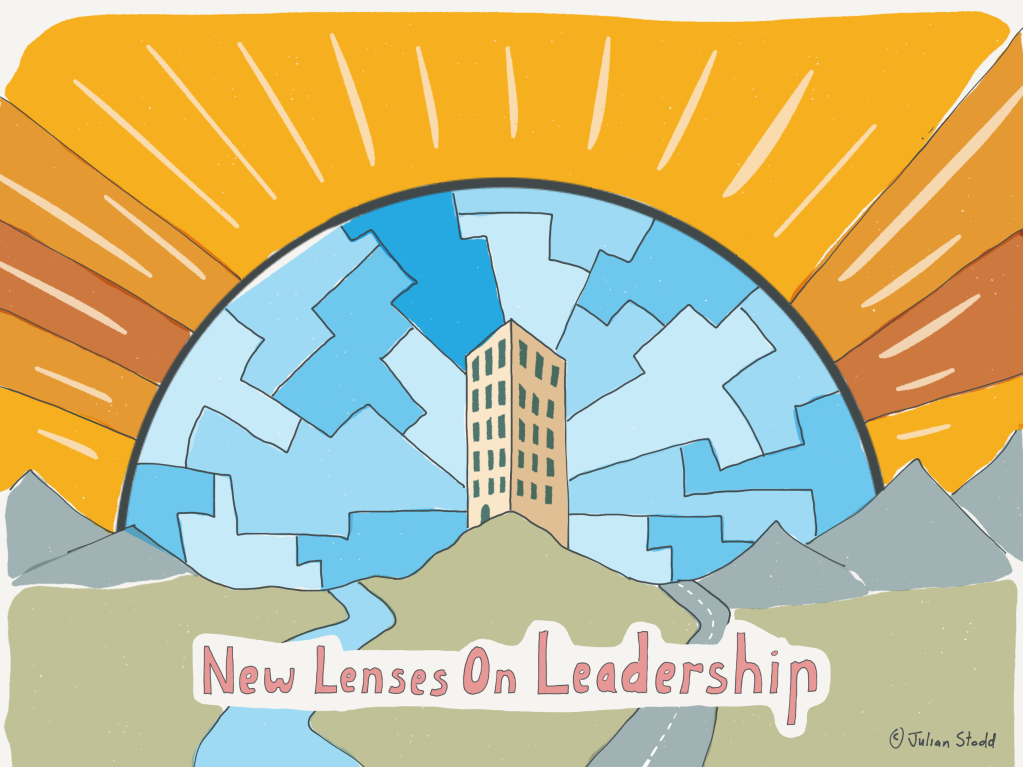Leadership is a legacy function, facing towards an uncertain future. Our models of scientific management – born out of the kinetic challenges of the Industrial Revolution, and our notions of the ‘Structural’ organisation, creating codified capability and holding infrastructure as asset, are increasingly outdated. Not particularly because they were wrong (although the social justice of certain aspects of work and current consumerism is highly suspect), but rather that our ecosystem has changed. Our space of operation has shifted, and hence we are maladapted for the environmental pressure bearing down upon us. Many Organisations recognise this and are seeking to navigate new models of leadership, but how will we find our way?

Scale is a reasonable starting point: to note how we consider Organisations as a structural whole, yet also as social web. The ‘self’ into the ‘system’. This leads us to consider change against this scale: how do we change the system, and how do we change the individual people. But much as in the quantum realm, rules are not universally true. Some things operate differently at different scales (like trust and empathy, and power). Most likely we need leadership that is adaptable to scale – able to operate at both macro, structural levels, but also micro and tribal ones.
We could also consider the idea that we are moving from the single, to multi dimensional context of work, where the ‘formally’ defined context of yesterday is now outmatched by multiple concurrent social contexts. And we must ‘lead’ across all of them (or at the places where they intersect).
Considering dimensionality and scale sets a scene, but there is a backdrop to it as well: the evolving nature of knowledge, the disruption of technologies, the fracturing and reformulation of the Social Contract, the nature of engagement, the shift of consumer expectations from ‘utility’ to ‘experience’ and so on. There are threads through this: that we seek agency, that we seek validation, that we weave between services, that trust drives behaviour, that leadership is not simply a structural feature.

In my own work i’ve described our context as the Social Age: we are radically connected, and inhabit diverse ecosystems of technology – there is a proliferation of community and a general rebalancing of power. And the ways that power ‘works’ have shifted from the codified to the social.
I would argue that we face paradigmatic change, and that both the pandemic, and emergence of Generative AI, have pushed us further from certainty.
I notice in my conversations within Organisations that there is often a tension between trying to ‘fix’ things operationally, and also to seek out advantage through holistic adaptation, but these two things are in conflict, and often lead to more programmatic and structural outcomes. Possibly because this is what we know how to do, know how to procure, are actively being sold, and because it’s ‘safe’ to suggest.
But navigating a new model of leadership may require us to consider more fully how capability is built, and held, both individually and collectively.
There are landmarks for us to navigate by: we need greater interconnection (this is connection beyond structure alone – it speaks to how we weave strength through culture, through connection and the weaving of trust and belonging. It’s a way of taking the local, and tribal, and extending it). We need to build a greater ability around social metacognition and sense making – not codified strength for one challenge, but a more general curiosity and diagnostic ability. We may need to consider how we create more fluid models of Organisational Design, whereby the Organisation itself is reconfigurable to need, as opposed to anchored in structure. And our understanding of both culture, and change, will need to adapt, to take more narrative and negotiated perspectives.
All of this speaks to Organisations that are probably smaller than what we see today (in terms of headcount and assets), but more deeply connected into partnership relationships – for aspects of scale and capability – as well as having a different model of leadership.
I would argue that we need leaders to be both formal, and Social – with a specific capability to navigate between contexts. Indeed, understanding context is a key capability in itself.
Most recently i’be been sharing work on leadership as ‘motion’, ‘interconnection’, ‘boundary’ and ‘imperfection’, which recognises the overall more dynamic feature, as well as tying this into earlier work on Social and Collaborative learning, looking at how we form coherent Communities ‘in’ Practice.
This work is shared as part of #WorkingOutLoud on Social Leadership.

